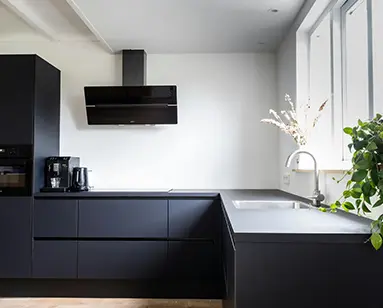How Smart Devices Work Together: Creating a Seamless Smart Home Experience
1. The Role of IoT in Smart Device Integration
The Internet of Things (IoT) is the backbone of smart home technology. IoT allows devices to connect to the internet and to each other, enabling them to share data and function cohesively. With IoT, your smart thermostat can adjust the temperature based on occupancy sensors, your smart locks can sync with security cameras, and your lighting can respond to your daily routine.
2. Communication Protocols That Enable Smart Homes
Smart devices use different communication protocols to interact with one another. Some of the most common include:
- Wi-Fi – Ideal for high-bandwidth applications like security cameras and streaming devices.
- Bluetooth – Used for short-range communication, such as connecting smart speakers and wearables.
- Zigbee & Z-Wave – Low-power mesh networks that connect multiple smart home devices efficiently.
- Thread – A new protocol designed to improve smart home connectivity with low latency and high security.
3. Centralized Control: Smart Hubs & Voice Assistants
A centralized control system ensures that smart devices work together effortlessly. This can be achieved through:
- Smart Hubs – Devices like Samsung SmartThings or Apple HomeKit act as a bridge between different smart home protocols.
- Voice Assistants – Alexa, Google Assistant, and Siri provide voice-controlled automation, allowing users to command multiple devices with ease.
- Smartphone Apps – Most smart home ecosystems offer mobile apps that enable users to monitor and control their devices remotely.

4. Automation & AI-Powered Smart Homes
AI plays a significant role in modern smart homes by learning user behavior and automating routines. Examples include:
- Smart Thermostats adjusting temperatures based on occupancy patterns.
- Lighting Systems adapting brightness and color based on time of day or user preferences.
- Security Systems integrating facial recognition and motion detection for enhanced protection.
5. Benefits of a Fully Integrated Smart Home
A well-integrated smart home offers numerous benefits, including:
- Convenience – Control all devices from one interface or using voice commands.
- Energy Efficiency – Optimized power consumption through automation and AI-driven adjustments.
- Enhanced Security – Comprehensive security solutions that work together for better protection.
- Improved Lifestyle – Personalized automation enhances comfort and productivity.
Conclusion
Smart home devices are most effective when they work together in a cohesive and integrated manner. By leveraging IoT, communication protocols, AI, and centralized control systems, homeowners can create a truly intelligent and responsive living space. As technology advances, smart home ecosystems will become even more seamless, making life more convenient, efficient, and secure.
Are you ready to experience the power of a fully connected smart home? Explore the latest smart home solutions available at Prilue and take control of your home like never before!








